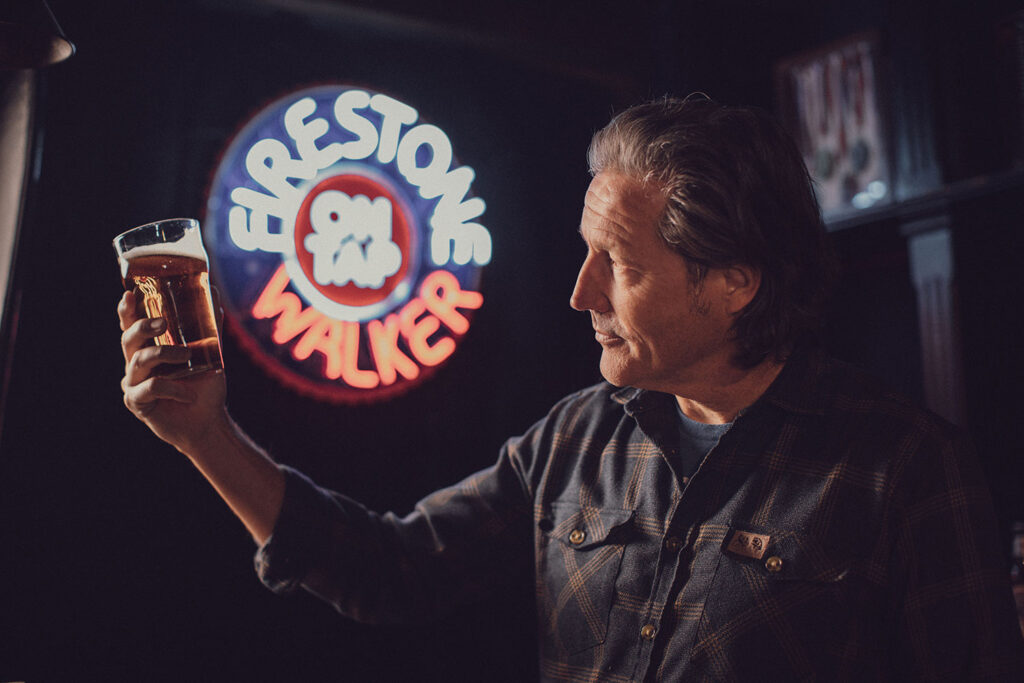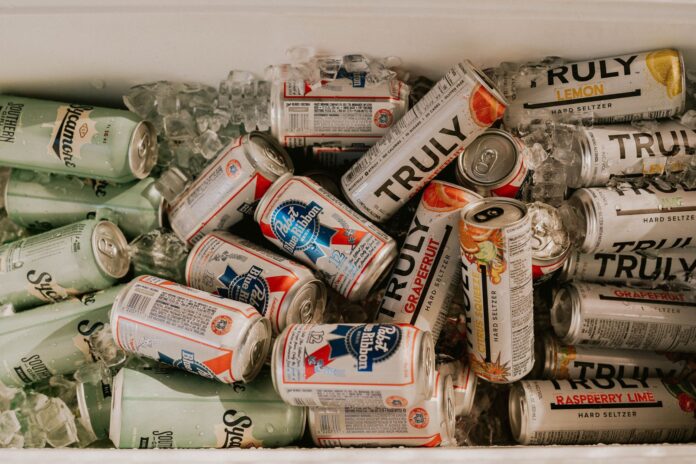Perhaps more so than any other beverage alcohol category, beer has undergone the most change in the past five years.
Pre-pandemic, a rise in microbrewery taprooms drove greater consumer experimentation, which in turn helped fuel a meteoric rise in craft beer. Suddenly, everybody had opinions on hazy IPAs and kettle sours. And the more locally produced, the better.
Then Covid-19 arrived. On-premise operations shut down for months. Financial damage followed. Breweries shed employees and applied for PPP loans.
Beer orders for curbside pickup and deliveries to local customers could only make up so much monetary ground.
Meanwhile, many consumers sheltering at home made short, panicked trips to local liquor stores. Masked up and following arrows laid out along tiled floors, people quickly grabbed whatever products they knew and trusted the most.
“During the pandemic, we saw a massive bump in beer purchases, especially with familiar, value-oriented brands (relative to their segment within beer),” recalls Sandeep Anaokar, chief marketing officer, Mahou USA, whose portfolio includes Founders Brewing Co., Avery Brewing Co. and Mahou Imports.
With bars, restaurants and taprooms closed, drinking occurred mostly at home. Consumers built out their own backbars and learned how to mix cocktails. Or, they learned to buy premixed cocktails, setting off the ongoing ready-to-drink (RTD) beverage boom. The hard seltzer movement continued, as did another rising trend: “better- for-you” products, with no or low ABV.
In the later stages of the health crisis, the economy fell ill with inflation. Naturally, this affected purchasing preferences. “Following the pandemic’s stay-at-home phase, there was an immediate shift away from the darlings of yesteryear, like craft and hard seltzers, with consumers instead opting for value brands, regardless of the beer segment,” Anaokar says.
Nowadays, inflation has cooled (comparatively), while Covid-19 is more endemic than threatening. In this new environment, what can we expect from beer?
Taking Stock of 2023
“The industry is interesting right now, with some very dynamic shifts in trends from a macro perspective,” says Eric Franco, vice president of U.S. sales for BrewDog USA. This multinational company’s portfolio includes distributed beers, more than 100 pubs, hotels, breweries, a cidery and a distillery.

“We are all faced with economic uncertainty, a shift in taste profiles available to drinkers across the country, and how everyone in the ‘circle of retail’ manages their own business while trying to actively be a solution to others,” Franco says. “As producers, today’s ‘state of affairs’ requires us all to look at how we are operating and to ensure what we produce is high quality, answering the demand of both retailers and consumers.”
Which is to say, a lot is actively shifting. And much of that is shifting online, as social media and the importance of digitally connecting with consumers has only grown.
“There are several consumer behaviors and trends we’ve tapped into — most importantly, humans’ inherent desire to connect with each other and the world around them,” says Meredith Ruskin, vice president of marketing for Kona Big Wave. “This observation is infused in every way we show up to our fans.”
Perceptive brands have tapped into this consumer habit: the need to share moments of happiness and human connection. In other words: the importance of social media and capturing drinking occasions.
“We recently launched our ‘Acts of Aloha’ initiative, which encourages and celebrates the moments that bring people together, spread positive vibes and embrace the spirit of Aloha,” Ruskin says. “Throughout summer 2023, we gave aways $100,000 in cash and prizes to fans who shared the ways they’d participate in ‘Acts of Aloha’ — those true, genuine moments of unity — to help create more unforgettable moments of togetherness.”
At the same time, as consumers return to taprooms and take their time browsing retail stores again, the pre-Covid trend of experimentation has returned. “Now, we’re in a calmer, more-predictive period of consumer behavior, as consumers return to exploring brands outside of big domestics and are open to once again venturing outside their beer comfort zones,” observes Anaokar of Mahou Imports.
Building Brands Matters
Savvy breweries have found a balance between this encouraging consumer experimentation while keeping customers close through strong brand building.
“While beer experimentation is re-emerging, our consumers continue to face economic pressures,” says Anaokar. “We must build consumer trust so that they know money spent on our products will meet or surpass their expectations. Building brands that tap into the right consumer insights provides reassurance that their dollars won’t go to waste.”
“This explains breweries’ (Founders included) increased focus on line extensions or themed variety packs that consist of and build on products that consumers know and love,” he adds. “Consistently communicating your brewery’s brand message while ensuring product quality upholds that trust is key to driving and preserving consumer loyalty.”
Agreeing with him is David Walker, cofounder of the craft beer pioneer Firestone Walker Brewing Co. Walker ties brand building into the significance of occasion-based drinking in terms of connecting with consumers.
“Brand building is hugely important,” he says. “Occasions matter more than ever in our opinion, so balancing the intrinsic education with that element of ‘why our brands fit that specific occasion’ is important.”
Between that and sampling, building bottom up is also important, Walker notes. “Adding the layers of above-the-line marketing, where you’re positioning your brand through mass channels, and more direct below-the-line tactics like trade shows and targeted digital placements is the magic that brings it all together.”

RTDS and Hard Seltzers
Among the greatest changes in the beer industry in the past five years has been the massive gain in market share of RTDs and hard seltzers. Is this good or bad for the category?
“We don’t call it damage, but more so a guide to re-focus our thinking on what retailers and drinkers are looking for when it comes to taste and convenience,” says Franco of BrewDog USA. “Many of the seltzer products offer a sweeter, more tropical taste, as well as a higher ABV, and have opened up that need to keep up with a consumer’s palate expansion. It has also forced organizations to look at their R&D process and their ‘bench’ for inspiration in helping grow the category.”
This shift in consumer taste has motivated (and necessitated) many breweries to expand beyond beer.
“We feel strongly that globally, we define ourselves as a beverage company who produces craft beer, and now, in some markets, spirits and RTDs as well.” Franco says. “Some of what we’ve seen from RTDs or seltzers has forced the industry to think about those ‘other’ products as potential sources of volume and revenue, and some of what we’ve seen has been a passing fad. It makes sense to grow if retailers and drinkers are looking for these types of offerings in the long term.”
Many breweries have profited from this expanded consumer palate — or at least not suffered from it.
“I am not sure that adding new [alcoholic] beverages to the consumer has damaged beer,” says Walker. “There has always been a segment of the market that experiments in the alc beverage space, and that consumer might be moving some market share around, but it will likely come back and is not material to our business.”
What’s Next for Beer?
As Covid-19 recedes, what do the years ahead hold for beer?
“What’s next for the American beer industry is largely what got us here,” says Walker. “It’s a highly evolved, innovative, profitable industry that will draw bright energetic people, which in turn will serve us all well.”
Anaokar of Mahou Imports foresees a continued emphasis on brand building. “Since many brewers have a built-in fanbase with equity in core brands, I predict we’ll see a larger focus on those core brands, with breweries innovating within them,” he says.
“This is counter to what we saw a few years back, when many appeared to chase the latest trends. Breweries will place a stronger emphasis on brands that have stood the test of time and aim to penetrate new consumer sets that are within reach with those brands.”
“Additionally, mid-to-large sized breweries will place more selective bets on innovation,” Anaokar adds. “Rather than going all-in to chase a big reward (like the tactic many took with hard seltzer), they’ll play in innovative spaces within their higher-share markets before making bigger investments.”
Franco of BrewDog USA shares this vision of cautious innovation and growth. “The industry will always have foundations rooted in easy-drinking, price-sensitive brands, and a continued opportunity for craft brands and their core styles like IPAs, seasonals and variety packs,” he says. ““Americans love beer and will continue to do so.”
Feature photo by Camden & Hailey George on Unsplash.
Kyle Swartz is editor of Beverage Dynamics. Reach him at kswartz@epgmediallc.com. Read his recent piece, 5 Key Alcohol Trends in 2023.










